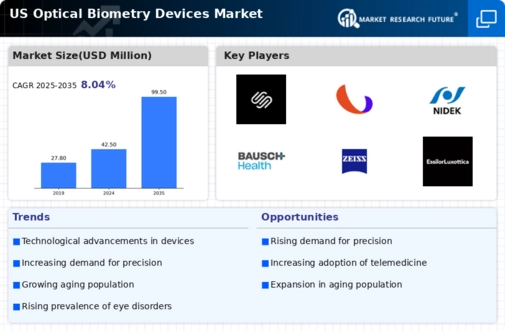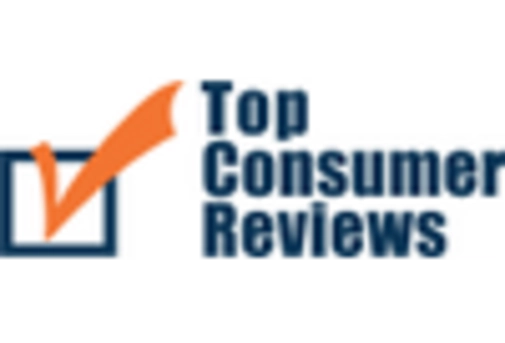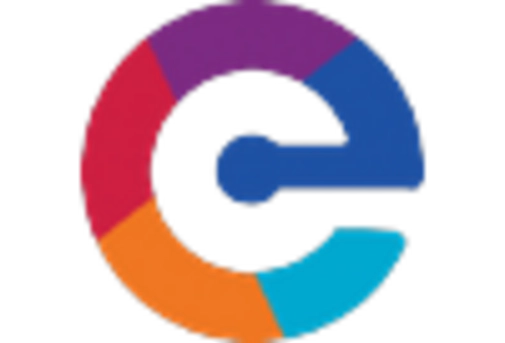The US Optical Biometry Devices Market is characterized by a dynamic landscape driven by advancements in technology and increasing demand for precise eye measurements in ophthalmic procedures. As the healthcare sector continues to evolve, the importance of innovative optical biometry devices becomes apparent, with manufacturers focusing on creating products that not only enhance accuracy but also improve patient outcomes. The competitive insights in this market reflect a blend of established players and emerging companies, all vying for market share through technological innovations, strategic collaborations, and expanded distribution channels.
The US market is particularly noteworthy for its robust regulatory framework that guides product development, ensuring that devices meet stringent safety and efficacy standards. As healthcare providers seek sophisticated solutions for cataract surgeries and refractive procedures, companies are continuously adapting their strategies to maintain a competitive edge.
Acuity has established a strong presence in the US Optical Biometry Devices Market, capitalizing on its reputation for high-quality, reliable products. The company is recognized for its advanced optical biometry solutions that cater to ophthalmologists, enhancing preoperative planning and post-operative outcomes. Acuity's strength lies in its technologic advancements, which include features that improve measurement accuracy and speed, thereby reducing patient wait times and enhancing operational efficiency for eye care practices. The company has forged partnerships with leading healthcare institutions, increasing its visibility and credibility within the market.
Acuity’s focus on customer support and training further solidifies its standing as a trusted provider, resonating well with eye care professionals seeking dependable biometry devices.
Visionix is another key player in the US Optical Biometry Devices Market, known for its innovative products that combine cutting-edge technology with user-friendly interfaces. The company's portfolio includes state-of-the-art devices that offer comprehensive biometric measurements, aiding in the diagnosis and treatment of various ocular conditions. Visionix emphasizes its commitment to research and development, continuously pushing the boundaries of optical technology to meet the changing needs of healthcare providers in the US. Its strengths lie in the reliability and scalability of its products, which have gained widespread adoption across leading ophthalmic institutions.
Visionix has pursued strategic mergers and acquisitions to bolster its market presence and broaden its range of offerings, thereby ensuring sustained competitiveness within the rapidly evolving biometry landscape. Through a combination of innovative technology and a robust distribution network, Visionix remains poised to capture significant market share in the US optical biometry sector.






















Leave a Comment